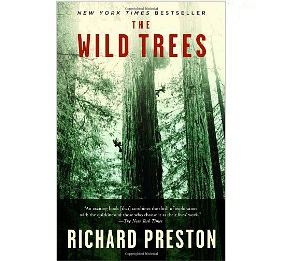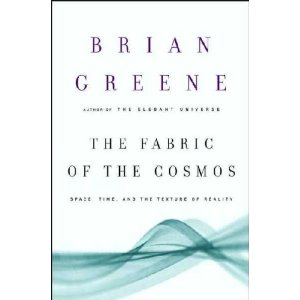Staff Picks
From Connie:
The Wild Trees
 by Richard Preston
by Richard Preston
This is a book about the oldest and largest living organisms the earth has ever sustained—the coast redwoods in California. Remarkably, only in the last couple decades has there been serious exploration of the upper reaches of these giant trees. Their canopies are a unique environment 30 stories in the air inhabited by vast numbers of recently-discovered plants and animals that never set foot on the ground.
Robert Preston takes you up there and introduces you to people like the intrepid, passionate scientists Steve Sillett and Marie Antoine (see if you can locate their tiny silhouettes on the book's cover) who spend their lives researching these “titans” while literally hanging out 300 feet up.
By the end, I felt a huge hunger to know more, and an urgency. The biggest trees in the redwood groves started life before Caesar was born; today most of them have been felled for shingles and railroad ties. Only 3% of old-growth coast redwoods remain.
This book does not connect all the dots as to how capitalism/imperialism has ravaged these forests, nor how a revolutionary society could start to reverse this—plainly, the only future for these trees, or for humanity. But Steve Sillet offers this: “This grove has burned in huge fires during the past millennia…A redwood can be burned to a blackened spar, and afterwards it goes, ‘Wooah,’ and just grows back…These trees can teach us how we can live. We can be hammered and burned, and we can come back and be more beautiful as we grow.”
From Clark:
The Fabric of the Cosmos
 by Brian Greene
by Brian Greene
The reason I like this book so much is Brian Greene’s power of explanation to a popular audience. In this book, Greene begins with an old argument between the two great scientists of the past, Newton and Leibniz. For Newton, space was a part of material reality—a fixed backdrop against which the motion of matter could be measured. For Leibniz, it was just the opposite; there was only matter in motion and the relations between chunks of matter.
Greene captures this debate with the question: “Is space a human abstraction or a physical reality?” Greene then jumps to how modern science seeks to answer this question, only to find many new questions thrown up, such as: Are there more than three dimensions? And is space smooth, continuous, and infinitely divisible, or is space at the smallest level made up of discrete, indivisible building blocks?
The philosophical issues that underlie these questions also permeate basic questions of politics. See, for example, “Crises in Physics,” Crises in Philosophy and Politics by Bob Avakian in Revolution #161.
You don’t have to know math or physics to enjoy this book. You just have to enjoy seeing how modern physics wrestles with contradictory explanations of reality, and it’s willingness to rethink all that has been accepted wisdom.